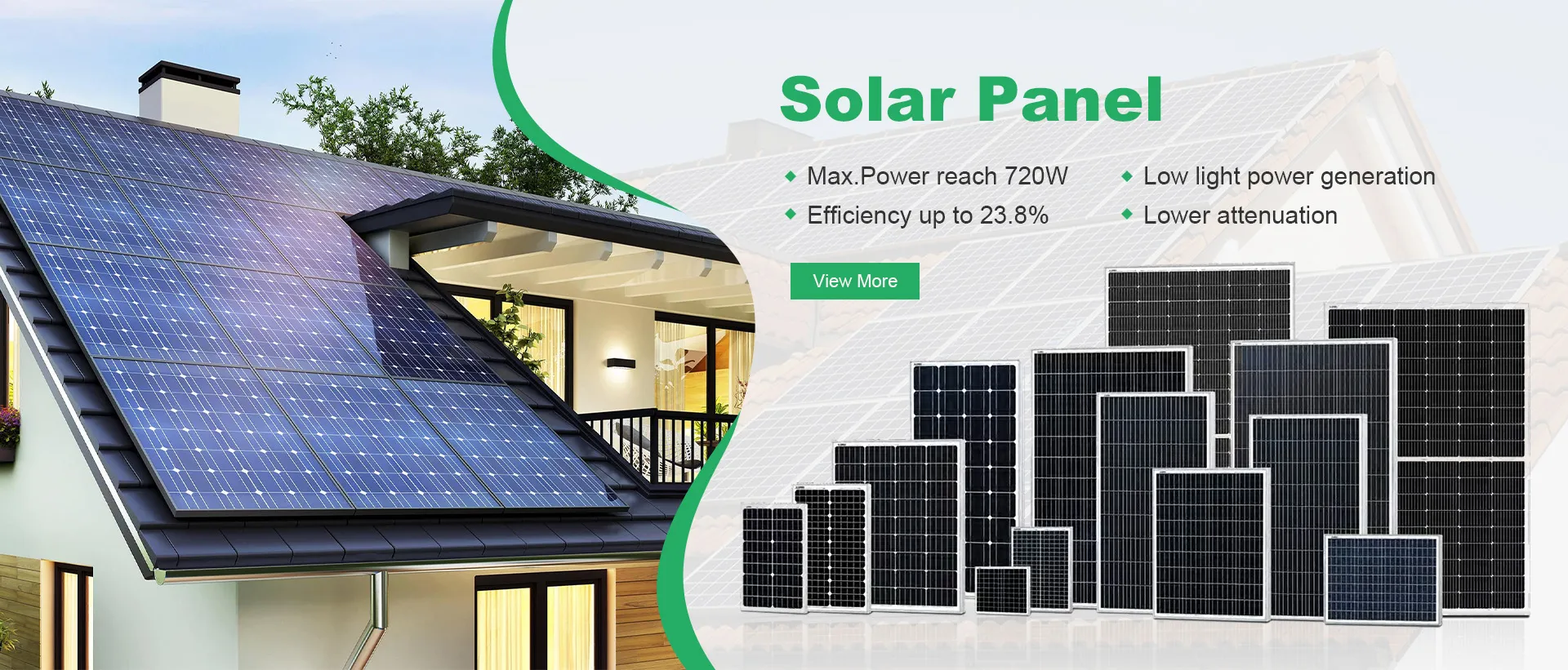Enhancing Solar Panel Performance in Low Light Conditions for Optimal Energy Production
Understanding Solar Panel Low Light Efficiency
Solar energy has become an increasingly popular alternative to traditional energy sources, thanks to its myriad benefits, including sustainability and decreasing carbon footprints. However, one of the challenges that arises in the context of solar energy utilization is the efficiency of solar panels under low light conditions. This article delves into the concept of low light efficiency in solar panels, why it matters, and how advancements are changing the landscape of solar technology.
What Is Low Light Efficiency?
Low light efficiency refers to a solar panel's ability to convert sunlight into electricity under conditions of reduced illumination. This typically occurs during early mornings, late evenings, cloudy days, or in shaded areas. The amount of energy produced by solar panels is directly proportional to the intensity of sunlight they receive. As light intensity diminishes, the efficiency of energy conversion also drops. Therefore, evaluating a solar panel's low light performance is crucial, especially for users in regions with frequent overcast conditions or shorter daylight hours.
Why Is Low Light Efficiency Important?
The significance of low light efficiency becomes evident when considering various scenarios where solar energy is harnessed. For instance, homeowners who install solar panels may find themselves in shaded environments due to trees, buildings, or other structures. In such cases, solar panels with better low light efficiency can still generate substantial energy, ensuring that the system remains viable and cost-effective.
Moreover, for commercial applications, such as solar farms, maximizing energy generation during all hours of the day—including low light conditions—can help improve the overall return on investment. This is particularly important as energy demands continue to rise, and the need for reliable and consistent energy sources becomes paramount.
Factors Affecting Low Light Efficiency
Several factors influence the low light efficiency of solar panels
1. Type of Solar Cell Different types of solar cells exhibit varying performances under low light conditions. For example, monocrystalline solar panels are known for their high efficiency and tend to perform better in low light compared to polycrystalline panels.
solar panel low light efficiency

2. Panel Design The physical design of solar panels, including their surface area and angle, can also impact how much light they capture, particularly diffuse light on overcast days.
3. Temperature Interestingly, lower temperatures can enhance the electrical efficiency of solar panels. Thus, in cold but cloudy conditions, solar panels may produce more energy than expected.
4. Quality of Materials The quality and layer configuration of the photovoltaic materials play a crucial role. Higher-quality materials typically exhibit improved low light performance.
Advances in Solar Technology
The field of solar technology is rapidly evolving, with researchers and manufacturers continuously striving to enhance low light efficiency. Some of the exciting advancements include
1. Bifacial Solar Panels These panels can capture light from both sides, thus utilizing reflected light from the ground, which can be beneficial in low light scenarios.
2. Perovskite Solar Cells This emerging technology has shown promise in achieving higher efficiencies due to their unique properties and the ability to absorb a broader spectrum of light. Early studies suggest that perovskite cells may perform exceptionally well in low light conditions.
3. Smart Solar Solutions Incorporating technology such as Maximum Power Point Tracking (MPPT) allows solar panel systems to optimize performance in varying light conditions, including those with lower intensity.
Conclusion
The efficiency of solar panels in low light conditions is a pivotal component of solar energy's overall viability and effectiveness. As technology progresses, the ability of solar panels to generate power, even in suboptimal lighting scenarios, is set to improve dramatically. For homeowners and businesses alike, investing in solar energy solutions with high low light efficiency can yield greater energy sustainability and economic benefits, even when clouds roll in. As awareness of solar technology continues to grow, it is essential to consider low light efficiency as a criterion for evaluating solar panel systems, ensuring optimal performance regardless of the weather. Embracing these advancements will enable us to harness the power of the sun more effectively, paving the way toward a greener and more energy-efficient future.
-
Navigating Off Grid Solar Inverter: From Use Cases to Trusted PartnersNewsAug.05,2025
-
Solar Edge String Inverter: A Wholesaler’s Guide to Inverter Technology SelectionNewsAug.05,2025
-
Microinverters: Revolutionizing Solar Energy UseNewsAug.05,2025
-
Future of Monocrystalline Solar Panel Efficiency: Latest Technological AdvancesNewsAug.05,2025
-
Solar Panels for House: A Complete Guide to Residential Solar EnergyNewsAug.05,2025
-
Panel Bifacial Performance in Snow and Low-Light ConditionsNewsAug.05,2025







